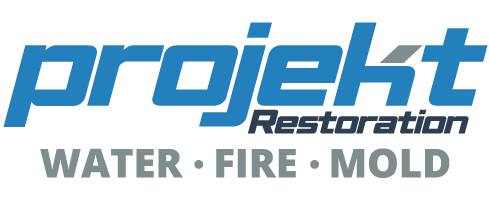is essential for anyone facing the aftermath of water, fire, or mold damage. Have you ever wondered what steps you should take to ensure a smooth restoration process? Knowing how to prepare can make a significant difference in the efficiency and effectiveness of the restoration services you receive.
In this article, we’ll provide you with a comprehensive checklist to help you prepare for a property restoration visit. From securing your belongings to documenting the damage, these steps will streamline the process and ensure that nothing is overlooked. By following this guide, you can set the stage for a successful restoration experience with Projekt Restoration, your trusted experts in water, fire, and mold restoration solutions.
But that’s not all—this checklist will also highlight key considerations that many property owners often miss. As restoration expert John Doe says, “Preparation is half the battle in property restoration.” So, let’s dive into the essential steps you need to take before the restoration team arrives, ensuring your property is on the path to recovery.
Understanding Property Restoration
Property restoration is a critical process that addresses damage caused by disasters. It plays a vital role in disaster recovery, ensuring properties return to their pre-loss condition. Common scenarios requiring restoration include water damage, fire damage, and mold remediation. Each situation demands immediate attention to prevent further deterioration and health risks.
Water damage often results from leaks, floods, or plumbing failures. It can lead to structural issues and mold growth if not addressed promptly. Fire damage, on the other hand, can devastate a property, leaving behind charred materials and hazardous smoke residue. Mold remediation is essential when moisture creates an environment conducive to mold growth, posing health risks to occupants.
Restoration professionals are trained to handle these challenges effectively. They provide a range of services, including water damage restoration, fire damage restoration, and mold assessment. Their expertise ensures that properties are not only restored but also made safe for inhabitants. Engaging these specialists can significantly expedite recovery and minimize long-term damage.
Initial Assessment of Damage
Before the restoration team arrives, conduct a thorough preliminary assessment of the property. Start by inspecting key areas such as walls, floors, and ceilings. Look for signs of water damage, mold growth, or structural issues. Pay close attention to electrical systems, as water exposure can create hazards.
Next, document your findings meticulously. Take clear photos of any visible damage, ensuring you capture different angles. This visual evidence will be invaluable for the restoration process. Additionally, make detailed notes about the extent of the damage and any specific concerns you may have.
Consider using a checklist to ensure you cover all areas systematically. This approach helps you stay organized and focused. If you need assistance, reach out through our contact page. For a better understanding of potential costs, check our calculator. Remember, thorough documentation not only aids the restoration team but also supports any insurance claims you may file.
Creating a Restoration Plan
Developing a restoration plan begins with a thorough initial assessment. First, identify the most affected areas. This step is crucial, as it allows you to prioritize tasks that require immediate attention. For instance, water damage may necessitate urgent action to prevent further deterioration. Next, outline specific restoration tasks based on the assessment findings.
Consider the budget and timeline for each task. Allocate funds wisely to ensure critical areas receive adequate resources. Additionally, establish a realistic timeline that accommodates the complexity of the restoration process. This approach helps manage expectations and keeps the project on track.
Moreover, communicate with your restoration team regularly. This ensures everyone is aligned with the plan and aware of any changes. For more detailed guidance, you can explore our budget calculator or reach out through our contact page. By following these steps, you can create an effective restoration plan that addresses immediate needs while considering long-term goals.
Preparing the Property for Restoration
Before the restoration team arrives, complete several essential tasks to prepare your property effectively. First, remove any valuables and personal items from the affected areas. This step protects your belongings and allows the team to work efficiently. Next, secure the property by locking doors and windows. Additionally, turn off utilities such as gas, electricity, and water to prevent further damage or hazards.
Safety is paramount during this process. Avoid hazardous areas where structural damage may pose risks. If possible, wear protective gear like gloves and masks when entering affected spaces. Communicate openly with the restoration team about any specific concerns or needs you may have. Share details about the extent of the damage and any items that require special attention. This information helps them tailor their approach to your situation.
For more guidance on restoration services, consider visiting our contact page or use our calculator to estimate costs. Your proactive preparation will facilitate a smoother restoration process.
Communicating with Insurance Providers
Notifying your insurance provider about property damage is crucial. Start by gathering essential information. You will need your policy number, a detailed description of the damage, and any relevant photos. This information helps expedite the claims process. Next, contact your insurance company as soon as possible. Use the contact information provided in your policy documents.
During your conversation, clearly explain the situation and your restoration needs. Ask about the next steps and any forms you may need to fill out. Keep a record of all communications. Document the date, time, and names of representatives you speak with. This will help if any disputes arise later.
Additionally, maintain copies of all correspondence, including emails and letters. Organizing these records can simplify the claims process. For further assistance, consider using a consulting service to navigate complex claims. You can also utilize a calculator to estimate restoration costs. Staying organized and informed will ensure a smoother experience with your insurance provider.
Selecting a Restoration Company
Choosing the right restoration company is crucial for effective property recovery. Start by verifying their certifications and licenses. A reputable company should hold industry-standard certifications, ensuring they meet professional guidelines. Additionally, read customer reviews to gauge their reliability and service quality. Experience matters; companies with a proven track record are often more adept at handling various restoration challenges.
Request multiple quotes to compare pricing and services. This step helps you understand the scope of work involved. Ensure each quote outlines the specific tasks and materials included. Transparency in pricing can prevent unexpected costs later.
During your selection process, ask potential companies key questions. Inquire about their experience with similar projects. Ask how they handle emergencies and what their response time is. Additionally, find out if they offer a warranty on their work. Understanding their process for reconstruction and cleanup can provide peace of mind. Ultimately, taking these steps will help you select a trustworthy restoration partner for your needs.
Understanding the Restoration Process
The restoration process typically begins with a thorough assessment of the damage. Professionals evaluate the extent of the issue, identifying areas that require immediate attention. Following this, the cleanup phase commences. This step often involves removing debris and contaminated materials. Advanced techniques, such as dehumidification, play a crucial role in preventing further damage.
Next, repairs take center stage. This phase may include structural repairs, drywall replacement, and painting. Restoration experts utilize specialized equipment like air movers to expedite drying. These tools ensure that moisture is effectively removed from affected areas.
The timeline for each phase varies based on the severity of the damage. Generally, assessment and cleanup can take a few days. However, repairs may extend over several weeks, depending on the complexity of the work. Throughout this process, communication remains vital. Clients should stay informed about progress and any necessary adjustments. Understanding these steps helps set realistic expectations for a successful restoration journey.
Post-Restoration Follow-Up
After completing the restoration, conduct a thorough final inspection. This step ensures that all work meets your expectations and adheres to the agreed standards. Check for any remaining issues and address them promptly. Document everything, as maintaining records of the restoration work is crucial for future reference. These records can help in case of disputes or when filing insurance claims.
Additionally, consider implementing regular maintenance routines. Schedule periodic inspections to catch potential problems early. For instance, checking for signs of moisture can prevent mold growth. You might also want to explore dehumidification options to keep your environment dry.
Furthermore, educate yourself about the common causes of damage in your area. Understanding these risks allows you to take proactive measures. For example, if flooding is a concern, ensure your property has proper drainage systems in place. By staying vigilant and organized, you can significantly reduce the risk of future damage and maintain the integrity of your property.
Frequently Asked Questions
After property damage occurs, act swiftly. First, ensure everyone’s safety. Turn off utilities if necessary to prevent further issues. Next, document the damage with photos for your records. This evidence will be crucial for your insurance claim.
To find a reliable restoration company, seek recommendations from friends or family. Online reviews can also provide insights into a company’s reputation. Always check for proper licensing and insurance.
Insurance coverage varies, so contact your provider to discuss your policy. They can clarify what restoration costs are covered. The restoration process typically takes a few days to several weeks, depending on the extent of the damage.
Watch for signs of mold growth, such as a musty odor or visible spots. If you notice these, act quickly to prevent health risks. During restoration, it’s often safe to stay in your home, but follow your restoration team’s advice.
For your belongings, consider content cleaning services to protect your items. Lastly, to prevent future damage, regularly inspect your property and address any maintenance issues promptly.
Resources for Further Information
When preparing for a property restoration visit, several resources can provide valuable information. The Federal Emergency Management Agency (FEMA) offers extensive guidance on disaster recovery. Their website includes tips on securing your property and accessing financial assistance. Additionally, the American Red Cross provides resources for emergency preparedness and recovery. Their hotline can connect you with local services.
For more localized support, consider reaching out to your state’s emergency management office. They often have specific programs tailored to assist residents during restoration efforts. Nonprofit organizations like Habitat for Humanity also offer resources and volunteer opportunities for those in need.
Reading materials can further enhance your understanding of property maintenance. Books such as "The Complete Guide to Home Repair" provide practical advice. Online guides on websites like reconstruction and content cleaning can also be beneficial. These resources equip you with the knowledge needed to navigate the restoration process effectively.





